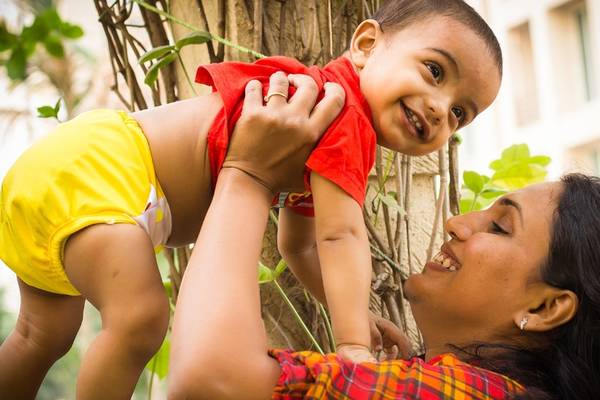
The Beginner’s Guide to using Advanced Cloth Diapers
16 Nov 2015 | 3 min Read
Pallavi Utagi
Author | 2 Articles
For new parents, even a simple daily chore like ‘potty’ takes on an entirely new meaning. So, not only do the timing, consistency, and frequency become discussion points, but also the ways to control the mess! While we have baby diapers today to our convenience, the options add another level of complexity. Ideally, parents seek an optimal balance between their own and the baby’s comfort in terms of whether or not to use the diaper.
Disposable diapers have fast caught the fancy of new parents as they are leak-proof, absorbent and keep the baby dry for long hours. The ease of disposal makes them outdoor friendly and a convenient option for the parents. The humble ‘langot’, in all its triangular glory, does not even come close in matching the stellar performance of a disposable diaper; yet continues to be the first ‘diaper’ that most Indian babies use. While cost remains a very important deciding factor, the fact that the “langot” is essentially “cloth” which is soft for the infant’s tender skin against the rash-inducing “plastic” disposables, makes them the undefeated choice for all new-born babies.
So, what if we could get the comfort of disposable diapers in the goodness of cloth? Yes, we are talking about modern, advanced cloth diapers for babies.
What are Advanced Cloth Diapers (ACDs)?
ACDs, now a popular diapering option in many other countries, are fast gaining popularity with the new, conscientious Indian parents.
A typical ACD is made up of:
1. A Leak-Proof Outer cover
Made of laminated polyester cloth, this outer cover with sturdy thigh and back elastics, ensures that the mess is contained within. Most mothers claim to have experienced way lesser of those awful poop blowouts with ACDs than that with disposable diapers.
2. An absorbent Pad (or two)
The laminated outer cover has a pocket on the inside of the cloth diaper with an opening to place a pad. This pad is made up of multiple layers of absorbent cloth (polyester, bamboo cotton, hemp – the choice is ample). You can customize the absorbency by putting in multiple pads when required (for example – during the night, or a long car journey).
3. Dry-Feel Layer
Who likes wet undergarments? Certainly not babies. The advanced cloth diapers have a unique fabric which touches the baby’s skin to keep it dry.
The pocket of the outer cover is usually made up of this dry-feel fabric.
Together, the leak-proof outer cover with the pocket and the absorbent pads make a brilliant diapering system to aid potty management.
With the economical and eco-friendly benefits that such cloth diapers provide, they are undoubtedly becoming a preferred choice for many parents.
They usually come in a one-size-fits-all option wherein the same diaper can be used right from a baby weighing 3 kgs till she/he is well above 15 kgs.
The only challenge with cloth diapers is that they need to be washed (Yes. That is why they are also called reusable diapers) and the upfront monetary investment that they require.
Yet, they can save you a good 70-80% of the overall amount you would have otherwise spent on diapering through your baby’s growing up years!
That’s only if you do not end up buying all the super cute prints that they come in.
So, bring home advanced cloth diapers and let your baby enjoy the coziness of cloth while you leverage the benefits of disposable diapers!
A


Suggestions offered by doctors on BabyChakra are of advisory nature i.e., for educational and informational purposes only. Content posted on, created for, or compiled by BabyChakra is not intended or designed to replace your doctor's independent judgment about any symptom, condition, or the appropriateness or risks of a procedure or treatment for a given person.
